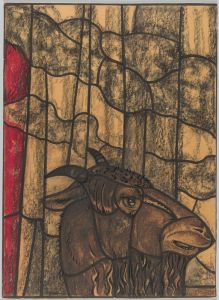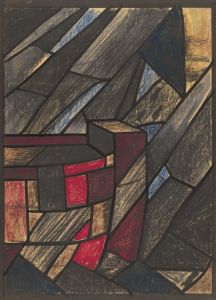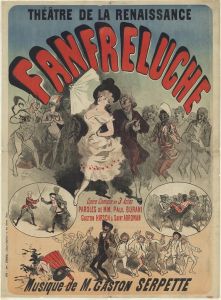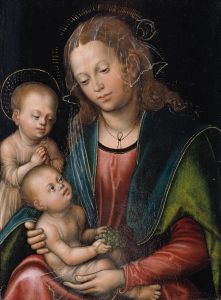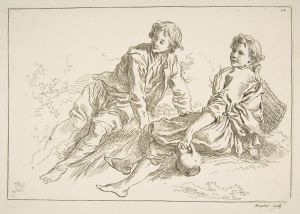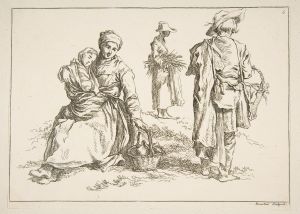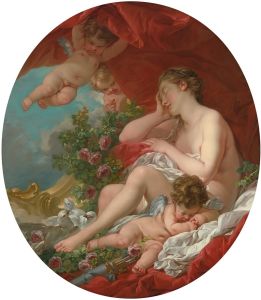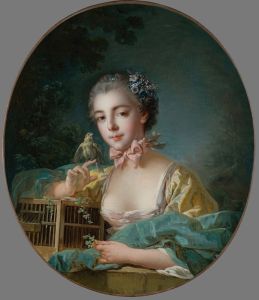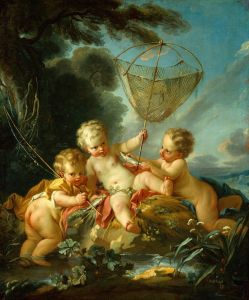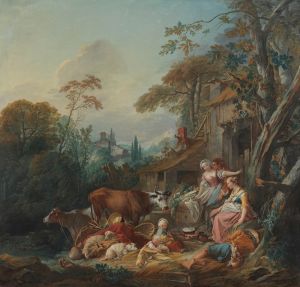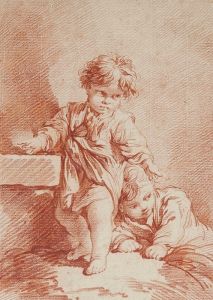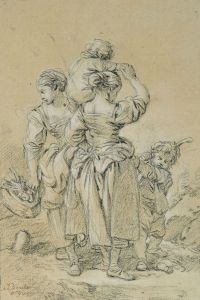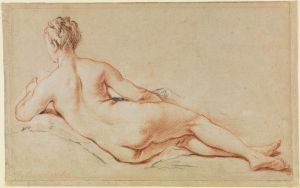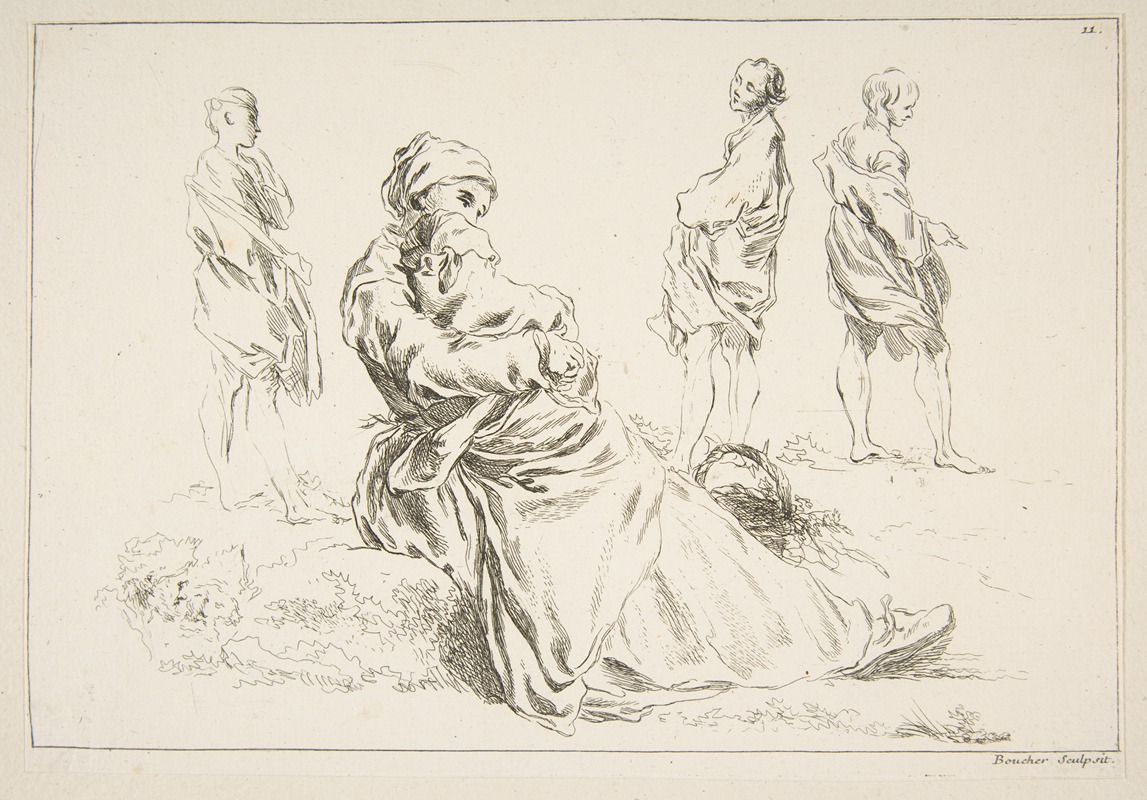
Livre d’étude d’après les desseins originaux de Blomart Pl.10
A hand-painted replica of François Boucher’s masterpiece Livre d’étude d’après les desseins originaux de Blomart Pl.10, meticulously crafted by professional artists to capture the true essence of the original. Each piece is created with museum-quality canvas and rare mineral pigments, carefully painted by experienced artists with delicate brushstrokes and rich, layered colors to perfectly recreate the texture of the original artwork. Unlike machine-printed reproductions, this hand-painted version brings the painting to life, infused with the artist’s emotions and skill in every stroke. Whether for personal collection or home decoration, it instantly elevates the artistic atmosphere of any space.
François Boucher, a prominent French painter and engraver of the 18th century, is renowned for his Rococo style, characterized by playful themes, delicate colors, and intricate details. One of his works, "Livre d’étude d’après les desseins originaux de Blomart Pl.10," is part of a series that reflects his mastery in translating original designs into engravings. This particular piece is part of a collection that showcases Boucher's ability to reinterpret and adapt existing works, a common practice among artists of his time to study and disseminate artistic techniques and styles.
The "Livre d’étude" series, which translates to "Book of Study," indicates that these works were intended as educational tools or references, possibly for other artists or collectors interested in the artistic trends of the period. The reference to "Blomart" in the title suggests that the original designs were by Abraham Bloemaert, a Dutch painter and printmaker known for his contributions to the development of Dutch art in the late 16th and early 17th centuries. Bloemaert's work often featured religious and mythological themes, rendered with a strong sense of composition and detail, which would have provided a rich source of inspiration for Boucher.
Plate 10 of this series, like the others, would have been an engraving, a medium that Boucher excelled in. Engraving involves incising a design onto a hard surface, traditionally a metal plate, which is then used to print images on paper. This technique allows for the reproduction of artworks and was a vital method for disseminating art across Europe before the advent of modern printing technologies.
Boucher's adaptation of Bloemaert's designs would have involved a careful study of the original works, followed by a reinterpretation that aligned with his own artistic sensibilities. This process not only highlights Boucher's technical skills but also his ability to bridge different artistic traditions, merging the Northern European influences of Bloemaert with the French Rococo style that Boucher epitomized.
The Rococo movement, which Boucher was a leading figure of, is characterized by its ornate and decorative qualities, often featuring themes of love, nature, and mythology. Boucher's works are celebrated for their light-heartedness and elegance, qualities that would have been infused into his engravings based on Bloemaert's designs.
While specific details about "Livre d’étude d’après les desseins originaux de Blomart Pl.10" are limited, the context of its creation provides insight into the artistic practices of the 18th century. Boucher's engagement with Bloemaert's work exemplifies the interconnectedness of European art traditions and the ongoing dialogue between artists across generations and regions.
In summary, "Livre d’étude d’après les desseins originaux de Blomart Pl.10" by François Boucher represents a fascinating intersection of artistic study and adaptation. Through this work, Boucher not only paid homage to the legacy of Abraham Bloemaert but also contributed to the rich tapestry of 18th-century art, blending influences and showcasing his own distinctive style.





